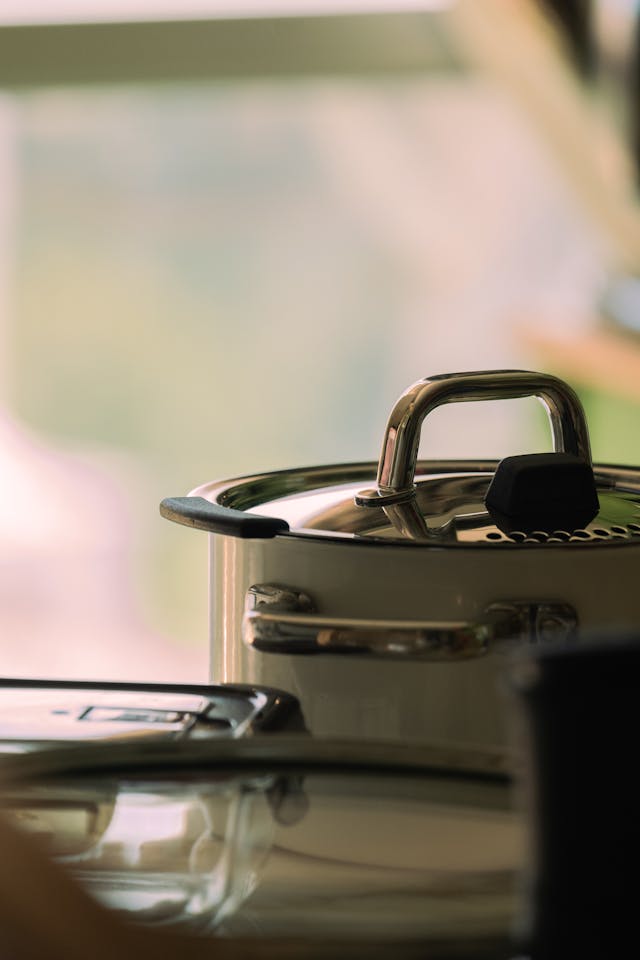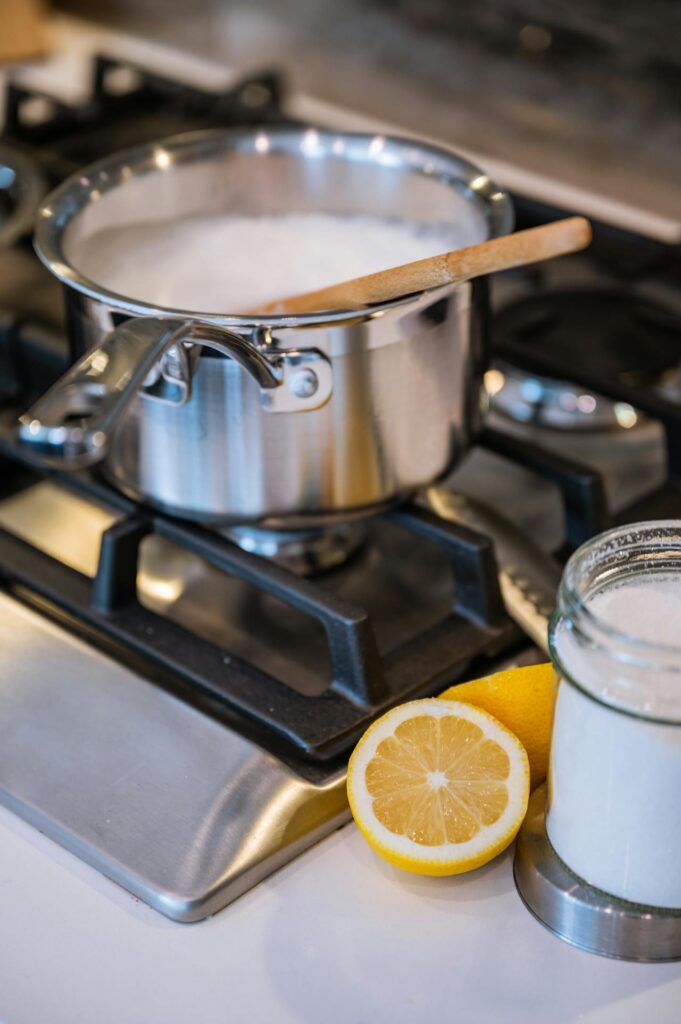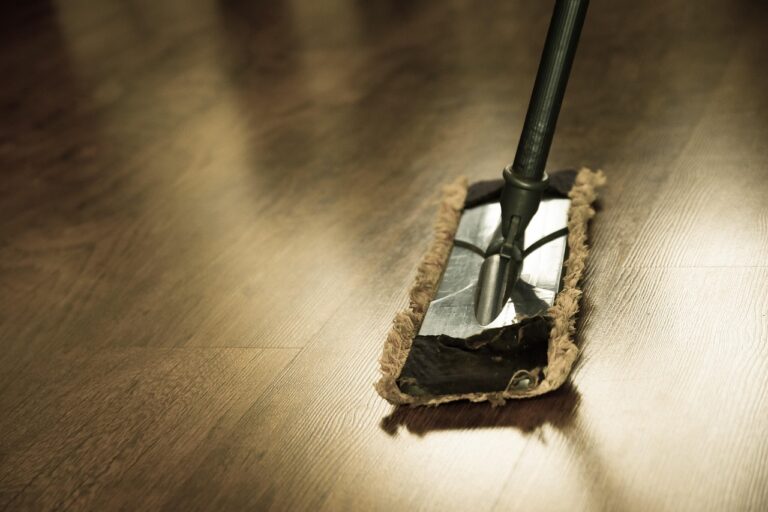Those little rivets that attach your pot handles can collect grime over time. Food splatters, grease, and residue tend to settle in those tight crevices. Here’s how to tackle them without spending your whole afternoon scrubbing.

Why Those Rivets Get So Grimy
Rivets create tiny gaps where handles meet the pot surface. Steam, oil, and food particles can work their way into these spaces during cooking. Over time, that buildup hardens and becomes tougher to remove with regular wiping.
1. The Baking Soda Paste Method
Mix three parts baking soda with one part water until you get a thick paste. The slightly gritty texture helps lift stuck-on residue without scratching stainless steel or aluminum. Apply it directly to the rivets, let it sit for 10 minutes, then scrub with an old toothbrush.
The alkaline nature of baking soda can help break down grease. Rinse thoroughly with warm water afterward.
2. Dental Floss for Deep Crevices
This one sounds odd but works surprisingly well. Dental floss can slip into gaps that brushes can’t reach. Wrap a piece around your fingers, apply a bit of dish soap, and gently work it around each rivet in a back-and-forth motion.
You might be amazed at what comes out. Just keep in mind that waxed floss glides more smoothly than unwaxed.
3. White Vinegar Soak
Fill your pot with equal parts white vinegar and water, making sure the liquid covers the rivets. Heat the mixture to a gentle simmer for 15 minutes, then let it cool. The acetic acid in vinegar can help dissolve mineral deposits and loosen grime.
After soaking, use a brush to clean around the rivets. This approach tends to work well for pots with interior rivets.
4. Toothpick Precision Work
Sometimes you need a fine-point tool. A wooden toothpick can carefully dislodge debris from rivet edges without damaging the metal finish. Work gently to avoid scratching or leaving wood splinters behind.
Dip the toothpick in soapy water first. This helps soften the buildup as you work.
5. Steam Cleaning Power
Hold the grimy pot over a kettle of boiling water or use a handheld steamer. The steam can soften hardened grease and food particles, making them easier to wipe away. Follow up immediately with a brush or cloth while everything’s still warm.
This method may be particularly useful for exterior rivets. The heat and moisture combo often loosens what scrubbing alone can’t budge.
6. Melamine Foam Sponge Method
Melamine foam sponges can tackle stubborn stains. Dampen the sponge and gently work it around the rivet areas. The micro-abrasive structure lifts grime without harsh chemicals.
Test on a small spot first, especially on non-stick or colored finishes. Some surfaces might be too delicate for this method.
7. Cream of Tartar Solution
Mix cream of tartar with a few drops of lemon juice to form a paste. This combination can help with tarnish and discoloration around rivets. The mild acid in lemon juice paired with cream of tartar’s cleaning properties may brighten dull metal.
Apply the paste, let it sit for 5 minutes, then scrub gently. Rinse well to avoid any residue.
8. Cotton Swab Detail Work
Q-tips or cotton swabs give you precise control. Dip one in your cleaning solution of choice and carefully work it around each rivet. The cotton tip can conform to curved surfaces and get into spots that bigger tools miss.
9. Boiling Water Flush
Sometimes simple is effective. Boil water in the pot, then carefully pour it directly over the exterior handle rivets. The heat and force of the water can dislodge loose particles. Follow up with a quick scrub while the metal is still warm.
Be cautious with temperature-sensitive handles. This works best on all-metal pots.
10. Hydrogen Peroxide and Baking Soda
Combine these two ingredients to create a fizzing paste. The reaction can help lift grime from tight spaces around rivets. Apply, wait while it bubbles, then scrub with a toothbrush.
This combo may work well for whitening discolored areas. The hydrogen peroxide provides some sanitizing action too.
Quick Maintenance Tips

Regular attention can prevent major buildup. After cooking, wipe down handles and rivets while the pot is still slightly warm. A quick pass with a soapy sponge typically takes less than 30 seconds.
For stubborn spots that resist these methods, you might need to repeat your chosen approach. Some buildup takes more than one round to fully remove.
Consider the material of your pots when selecting a cleaning method. What works safely on stainless steel might be too harsh for non-stick coatings.
Keep Those Rivets Clean
Clean rivets can make your cookware look newer and more cared for. Try the methods that suit your pot materials and see what works for your particular buildup. A little regular attention often prevents those tough cleaning sessions down the road.


